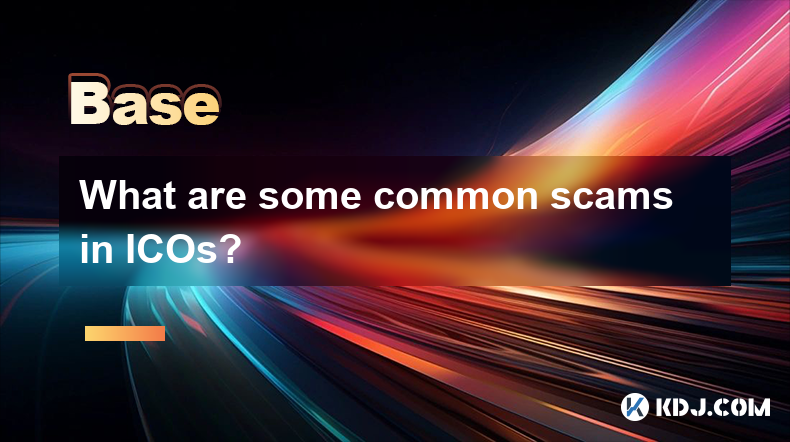-
 Bitcoin
Bitcoin $87,915.1013
4.01% -
 Ethereum
Ethereum $1,626.0336
3.05% -
 Tether USDt
Tether USDt $1.0002
0.03% -
 XRP
XRP $2.1225
3.25% -
 BNB
BNB $603.9394
2.51% -
 Solana
Solana $138.6104
1.03% -
 USDC
USDC $1.0000
0.01% -
 Dogecoin
Dogecoin $0.1612
4.65% -
 TRON
TRON $0.2431
-0.84% -
 Cardano
Cardano $0.6407
4.19% -
 Chainlink
Chainlink $13.4436
2.16% -
 Avalanche
Avalanche $20.5554
5.48% -
 UNUS SED LEO
UNUS SED LEO $9.0885
-2.49% -
 Stellar
Stellar $0.2597
7.37% -
 Toncoin
Toncoin $3.0010
0.25% -
 Shiba Inu
Shiba Inu $0.0...01257
1.68% -
 Sui
Sui $2.2420
6.60% -
 Hedera
Hedera $0.1711
4.33% -
 Bitcoin Cash
Bitcoin Cash $344.5133
3.21% -
 Polkadot
Polkadot $3.9101
1.15% -
 Hyperliquid
Hyperliquid $18.1893
5.38% -
 Litecoin
Litecoin $80.0892
5.05% -
 Bitget Token
Bitget Token $4.4777
1.97% -
 Dai
Dai $1.0000
0.00% -
 Ethena USDe
Ethena USDe $0.9994
0.01% -
 Pi
Pi $0.6362
1.91% -
 Monero
Monero $214.2887
-0.67% -
 Uniswap
Uniswap $5.4298
4.03% -
 Pepe
Pepe $0.0...07950
6.54% -
 Aptos
Aptos $5.1342
2.79%
What are some common scams in ICOs?
ICO scams employ high-yield promises, fake teams, opaque financials, pressure tactics, and unrealistic roadmaps to defraud investors; thorough due diligence is crucial.
Mar 26, 2025 at 01:22 am

Key Points:
- High-Yield Promises: Many ICO scams lure investors with unrealistically high returns, far exceeding market averages.
- Fake Team Members & Whitepapers: Scammers often fabricate team profiles and whitepapers filled with technical jargon to appear legitimate.
- Lack of Transparency & Audits: Legitimate projects prioritize transparency; scams often avoid independent audits and clear financial reporting.
- Pressure Tactics & Time Limits: Scammers create a sense of urgency, pressuring investors to commit funds quickly before the "opportunity disappears."
- Unrealistic Roadmaps & Milestones: Ambitious yet vague roadmaps lacking concrete milestones are red flags indicating potential scams.
- Anonymous or Pseudonymous Teams: Legitimate projects usually have identifiable team members; anonymity is a major warning sign.
- Clone ICOs: Scammers mimic successful projects, creating near-identical websites and branding to deceive investors.
- Pump and Dump Schemes: Artificial inflation of the token price followed by a rapid sell-off by the scammers.
- Rug Pulls: Developers abruptly shut down the project, absconding with investors' funds.
- Ponzi Schemes: Early investors are paid with funds from later investors, a structure destined to collapse.
What are some common scams in ICOs?
Initial Coin Offerings (ICOs) have unfortunately been plagued by numerous scams, targeting unsuspecting investors seeking quick profits. Understanding these common tactics is crucial for protecting your investment. One of the most prevalent is the promise of exceptionally high returns. Legitimate projects rarely guarantee astronomical profits; if it sounds too good to be true, it likely is.
Many fraudulent ICOs present fabricated team profiles and whitepapers. These documents, often filled with technical jargon meant to impress, lack substance and verifiable information about the team's experience and the project's viability. Always independently verify the claims made in the whitepaper.
Transparency is paramount in legitimate ICOs. Scrutinize the project's financial reporting and look for evidence of independent audits. A lack of transparency or refusal to undergo audits should raise serious concerns.
Scammers often employ pressure tactics, creating a false sense of urgency. They may impose strict time limits on investment, urging investors to commit funds quickly before the "opportunity" vanishes. Resist this pressure; due diligence takes time.
Unrealistic roadmaps and milestones are another red flag. While ambitious goals are understandable, a roadmap devoid of concrete details and achievable timelines indicates a lack of planning and a higher probability of failure. Analyze the feasibility of the stated goals.
The anonymity of the development team is a significant risk factor. Legitimate projects usually have identifiable team members willing to be transparent about their identities and experience. Avoid projects where the team remains anonymous or uses pseudonyms.
Clone ICOs represent a sophisticated form of deception. Scammers replicate the branding and website of successful projects, creating near-identical copies to deceive investors unfamiliar with the original project. Thorough research is essential to avoid these clones.
Pump-and-dump schemes manipulate the token price artificially. Scammers inflate the price through coordinated buying, then sell off their holdings at the inflated price, leaving investors with worthless tokens. Be wary of sudden, unexplained price spikes.
Rug pulls represent a particularly malicious type of scam. The developers abruptly shut down the project, taking investors' funds and disappearing without a trace. This often involves draining liquidity pools or simply shutting down the website and social media presence.
Ponzi schemes, while not unique to ICOs, frequently appear in this space. Early investors are paid with funds from later investors, a structure inherently unsustainable and destined for collapse. Understanding the project's funding model is crucial.
Common Questions and Answers:
Q: How can I identify a legitimate ICO?
A: Look for transparency (public team identities, audited financials), a realistic roadmap with achievable milestones, a well-written and detailed whitepaper, and community engagement. Independent research and due diligence are essential.
Q: What are the legal ramifications of participating in an ICO scam?
A: While legal repercussions vary by jurisdiction, you may lose your investment and potentially face legal action if you knowingly participate in fraudulent activities related to an ICO.
Q: What recourse do I have if I've been scammed by an ICO?
A: Recourse can be difficult. Reporting the scam to relevant authorities (e.g., the SEC, your local law enforcement) may be possible, but recovering funds is often challenging.
Q: Are all ICOs scams?
A: No, many legitimate ICOs exist. However, the high prevalence of scams necessitates thorough due diligence before investing in any ICO.
Q: What is the role of smart contracts in ICO scams?
A: Smart contracts, while intended to provide transparency and automation, can be exploited by scammers. Poorly written or vulnerable smart contracts can be used to facilitate rug pulls or other fraudulent activities.
Q: How can I protect myself from ICO scams?
A: Conduct thorough research, diversify your investments, never invest more than you can afford to lose, and be wary of unrealistic promises of high returns and pressure tactics. Consult with financial advisors if needed.
Disclaimer:info@kdj.com
The information provided is not trading advice. kdj.com does not assume any responsibility for any investments made based on the information provided in this article. Cryptocurrencies are highly volatile and it is highly recommended that you invest with caution after thorough research!
If you believe that the content used on this website infringes your copyright, please contact us immediately (info@kdj.com) and we will delete it promptly.
- Atok Partners with Bitgert to Advance Infrastructure and Advertising Economy in Web3 World
- 2025-04-21 23:00:13
- Pi Network (PI) Coin Could Be the Next Cryptocurrency to Launch an Exchange Traded Fund (ETF)
- 2025-04-21 23:00:13
- Strategy, the world's largest corporate Bitcoin holder, has purchased 6,556 BTC for $555.8 million
- 2025-04-21 22:55:13
- Bitcoin (BTC) Price Prediction: Arthur Hayes Hints at a Final Opportunity to Buy BTC Under $100K
- 2025-04-21 22:55:13
- Binance Adds ZORA to Spotlight Projects on Binance Alpha Alongside Other Names
- 2025-04-21 22:50:12
- Bitcoin (BTC) Price Prediction: BTC Surges Nearly 5%
- 2025-04-21 22:50:12
Related knowledge

Recommended top ten spot digital virtual currency trading platforms in the world in 2025
Apr 21,2025 at 05:15pm
Recommended top ten spot digital virtual currency trading platforms in the world in 2025 1. Binance As the world's premier cryptocurrency trading platform, Binance is known for its extensive trading pairs and efficient trading services. Its features include: High Liquidity : Binance has huge trading volumes, ensuring users can trade at the best pric...

Ranking of top ten virtual currency trading apps in the currency circle (the latest authoritative list in 2025)
Apr 21,2025 at 10:28pm
The top ten virtual currency trading apps in the 2025 cryptocurrency circle are listed as follows: 1. Binance Binance is one of the world's leading cryptocurrency trading platforms, known for its efficient trading system and extensive currency support. Binance's user interface is designed with simplicity and is suitable for beginners and profess...

What are the digital currency APP trading software in 2025? Ranking of the top ten digital virtual currency trading apps
Apr 21,2025 at 08:42pm
Ranking of the top ten digital virtual currency trading apps in 2025 1. Binance Binance continues to maintain its position as the world's leading digital currency trading platform in 2025. Its advantages include: Efficient trading volume : Binance has top trading volumes around the world, ensuring users can trade efficiently at any time. Diverse tra...

The top ten virtual currency trading app professional list of the three major virtual currency trading platforms in the currency circle in 2025
Apr 21,2025 at 11:21pm
Three virtual currency trading platforms in the currency circle 1. Binance As one of the world's leading cryptocurrency trading platforms, Binance has rapidly risen since its establishment in 2017 due to its huge trading volume and extensive user base. Binance's success stems from its rich trading pairs and high liquidity, but also from its cont...

Ranking of the top ten cryptocurrency trading apps in the currency circle in 2025
Apr 21,2025 at 08:49pm
Ranking of the three major virtual currency trading applications in the currency circle Binance: The world's leading cryptocurrency trading platform Binance has always been one of the pioneers in the cryptocurrency trading world. With its huge trading volume and a wide user base, it has become one of the most popular trading platforms in the world. ...

Top 10 best virtual currency trading platforms in the world ranked latest rankings for 2025
Apr 21,2025 at 10:00pm
Top 10 Most Popular Virtual Currency Trading Platforms in the World 1.Binance Binance is one of the world's leading cryptocurrency trading platforms, and is popular for its high liquidity and rich trading pairs. Binance supports over 500 cryptocurrencies and provides fiat currency deposit and cash withdrawal services. The platform interface is user-...

Recommended top ten spot digital virtual currency trading platforms in the world in 2025
Apr 21,2025 at 05:15pm
Recommended top ten spot digital virtual currency trading platforms in the world in 2025 1. Binance As the world's premier cryptocurrency trading platform, Binance is known for its extensive trading pairs and efficient trading services. Its features include: High Liquidity : Binance has huge trading volumes, ensuring users can trade at the best pric...

Ranking of top ten virtual currency trading apps in the currency circle (the latest authoritative list in 2025)
Apr 21,2025 at 10:28pm
The top ten virtual currency trading apps in the 2025 cryptocurrency circle are listed as follows: 1. Binance Binance is one of the world's leading cryptocurrency trading platforms, known for its efficient trading system and extensive currency support. Binance's user interface is designed with simplicity and is suitable for beginners and profess...

What are the digital currency APP trading software in 2025? Ranking of the top ten digital virtual currency trading apps
Apr 21,2025 at 08:42pm
Ranking of the top ten digital virtual currency trading apps in 2025 1. Binance Binance continues to maintain its position as the world's leading digital currency trading platform in 2025. Its advantages include: Efficient trading volume : Binance has top trading volumes around the world, ensuring users can trade efficiently at any time. Diverse tra...

The top ten virtual currency trading app professional list of the three major virtual currency trading platforms in the currency circle in 2025
Apr 21,2025 at 11:21pm
Three virtual currency trading platforms in the currency circle 1. Binance As one of the world's leading cryptocurrency trading platforms, Binance has rapidly risen since its establishment in 2017 due to its huge trading volume and extensive user base. Binance's success stems from its rich trading pairs and high liquidity, but also from its cont...

Ranking of the top ten cryptocurrency trading apps in the currency circle in 2025
Apr 21,2025 at 08:49pm
Ranking of the three major virtual currency trading applications in the currency circle Binance: The world's leading cryptocurrency trading platform Binance has always been one of the pioneers in the cryptocurrency trading world. With its huge trading volume and a wide user base, it has become one of the most popular trading platforms in the world. ...

Top 10 best virtual currency trading platforms in the world ranked latest rankings for 2025
Apr 21,2025 at 10:00pm
Top 10 Most Popular Virtual Currency Trading Platforms in the World 1.Binance Binance is one of the world's leading cryptocurrency trading platforms, and is popular for its high liquidity and rich trading pairs. Binance supports over 500 cryptocurrencies and provides fiat currency deposit and cash withdrawal services. The platform interface is user-...
See all articles






















































































